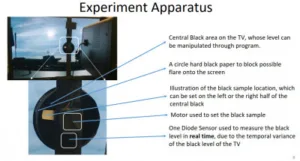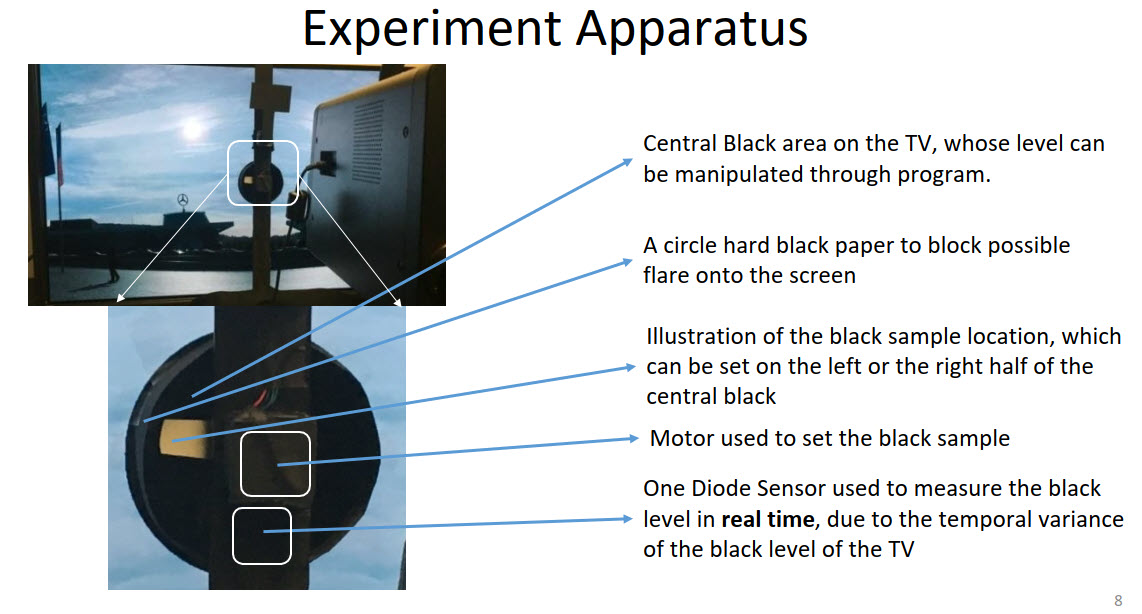SID’s Display Week Symposium and the Business Conference are the gifts that keep giving. It seems that if I spend any time digging into the content, it always brings a reward. A paper and presentation that intrigued me this year from Munsell Labs posed the question of ‘how black is black?’. That’s a good question.

When I started in the display business, the dominant display technology was the CRT. One of the challenges for that technology was that brightness was strictly limited. The CRT depended on a beam of electrons from the gun at the back hitting a phosphor layer. To get more brightness, the main way was to boost the quantity of electrons. However, boosting the beam current caused the beam to spread, which reduced resolution. The second problem that bombarding the phosphors with electrons damaged them, limiting the output and causing burn-in. (That’s why CRTs got ‘fuzzier’ as they aged. To maintain brightness as the phosphor degrades, you needed to boost the beam current and that caused the beam to spread). So the challenge was to get displays bright enough, they never seemed to be.
CRTs, and these days OLEDs, can create good black levels because you can turn the current off. No electrons means no photons, although ambient light reflecting off the phosphor or OLED material or any kind of unwanted excitation of the emissive materials can cause some light to be emitted.
LCDs, on the other hand, block the light from a backlight, and struggle to do this with 100% efficiency. If light leaks through, the black degrades and to get good contrast, you have to boost the brightness of the display and that costs money and power, although it can be done.
So, it would be useful for display makers to know how far they have to go to get to a ‘perfect’ black. Researchers at the Munsell Colour Labs of Rochester Institute of Technology, with collaboration and support from LG Electronics, looked to see if they could define a ‘Perfect’ black. (Paper 34.3 at the symposium).
The group set up an OLED TV which could be compared with a ‘Black Velvet’ material that was ‘as black as possible’ which it obtained from Acktars of Israel (and tested against other materials). (I have been fascinated by this topic since I first heard of Vantablack some years ago). It took care to avoid the effects of flare.
The team experimented with different images at different average picture luminance levels (APLs) and got users to compare the black on the screen with the black sample. For all but one of the samples, there was a clear result. It was important to take into account glare in the system which adds to the overall light level of the sample. If the level of glare combined with the display illumination was the same as the level of glare alone, the illumination level was considered as ‘perfect black’ in the image.
The result of the analysis found that a level of 0.003 cd/m² was ‘perfect black’, at least in the images tested. The group has a relatively simple ‘glare-based’ model that should allow the calculation of a ‘perfect black’ level for different displays and circumstances and based on standardised CIE glare calculations that are published and for which programmes are available to make calculation simple.
The test was performed on an OLED TV set with peak luminance of 327 cd/m².
The group achieved what I was always taught that the first research objective is. “The first objective of research is to show that more research is needed”. The group would like to extend the testing to displays with higher brightness and higher dynamic range and also get independent verification of its model.
The level of 0.003 cd/m² together with 327 cd/m² of peak luminance gives a contrast ratio of 109,000:1 which sounds reasonable to me as a level that should look pretty good. I remember when brands started claiming levels of contrast of a million to one in desktop monitors, using backlight dimming. I realised that given the relatively low level of peak brightness, that would mean an extremely low level of light in the black areas. I contacted a friend that worked at one of the best companies in display measurement equipment and he confirmed that there was no equipment available on the market that could actually measure that low level of luminance! It’s still not easy, and the group at MCSL acknowledged the help of Ed Kelley, an authority in these issues in measuring the low black levels in this experiment. (BR)


